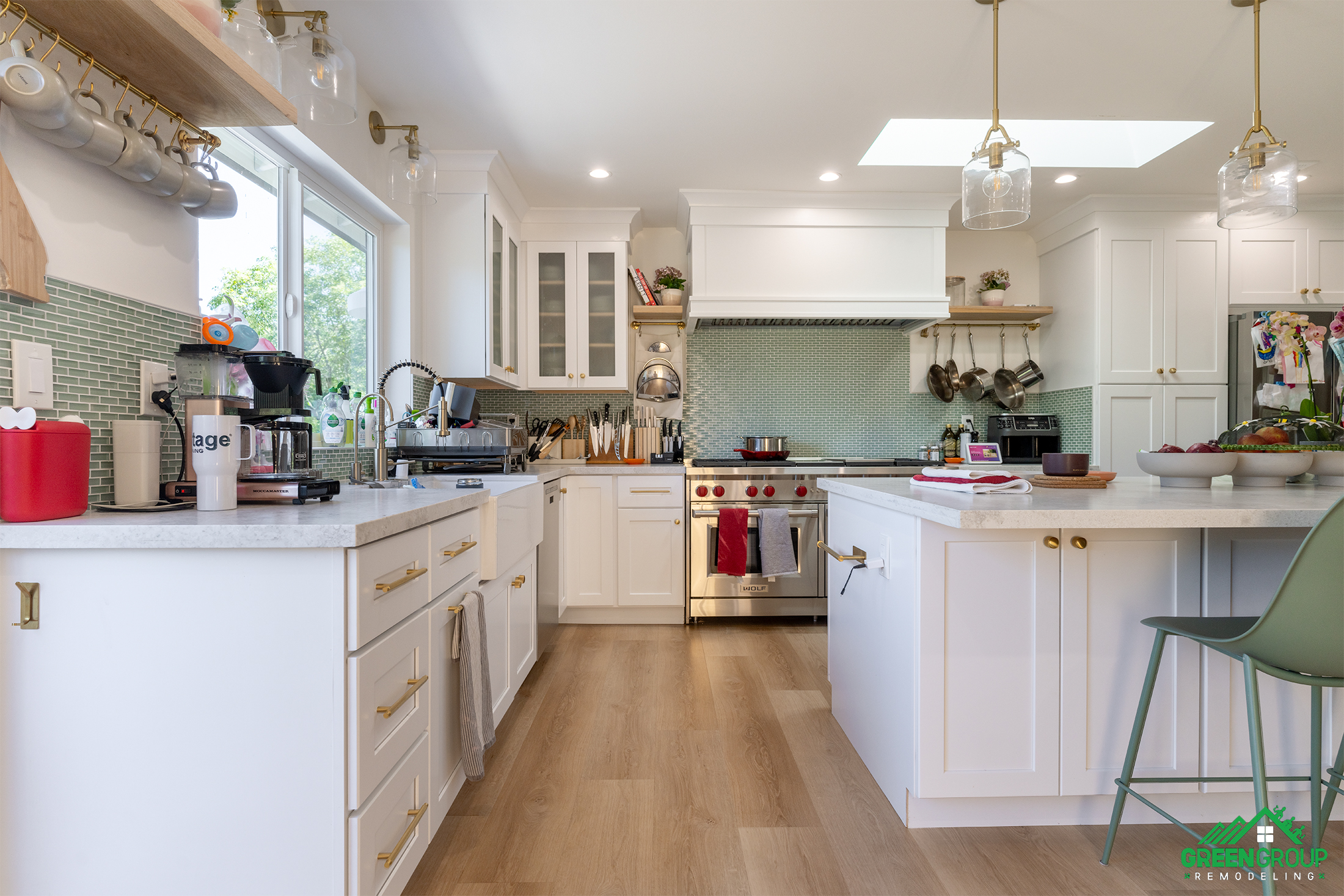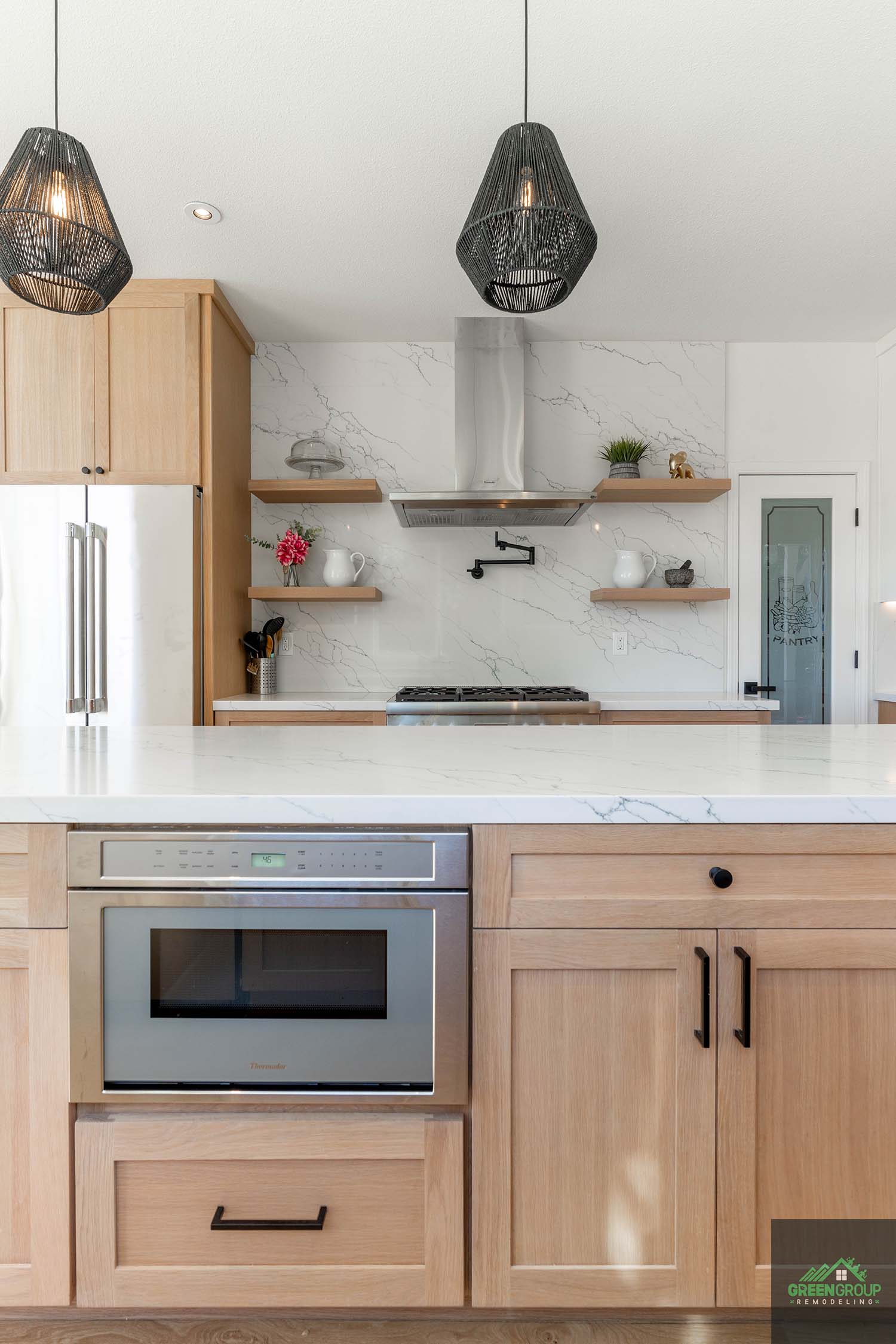Before you get started transforming your kitchen, you should know about these 11 common kitchen renovation mistakes to avoid. While a renovation can be super exciting, even the best-intentioned projects can fall short without careful planning. For Bay Area homeowners, where space, functionality, and style are highly valued, avoiding common renovation pitfalls is crucial to achieving a kitchen that looks beautiful and meets your practical needs.
From poor layout choices to budget missteps, certain mistakes can undermine the success of your kitchen remodel. In this guide, we’ll cover 11 common kitchen renovation mistakes and how to avoid them, ensuring your investment leads to a space that’s efficient, stylish, and built to last. Whether you’re planning a full remodel or just updating a few features, these tips will help you avoid costly errors and create the kitchen of your dreams.
11 Common Kitchen Renovation Mistakes to Avoid
1. Skipping a Detailed Plan
One of the most common mistakes homeowners make is diving into a kitchen renovation without a comprehensive plan. It may be tempting to start tearing things down and figure it out as you go, but without a clear blueprint, you risk design inconsistencies, budget overruns, and missed opportunities for functionality. A detailed plan should include layout, materials, finishes, appliances, and budget allowances. This roadmap will guide every step of the renovation, helping you avoid unexpected setbacks and ensuring a smooth, cohesive outcome.
2. Ignoring Workflow and the Kitchen Triangle
The kitchen triangle—which includes the sink, stove, and refrigerator—is the foundation of an efficient kitchen layout. Ignoring this crucial element can lead to a frustrating and inefficient workflow. If the distance between these key areas is too large or too small, it disrupts the flow and makes cooking cumbersome. When planning the layout, ensure there’s a balanced distance between each point in the triangle, with enough space to move comfortably. A well-thought-out kitchen triangle not only enhances functionality but also makes daily tasks easier and more enjoyable.
3. Not Maximizing Storage
In a kitchen, storage is everything. Failing to plan for adequate storage leads to cluttered countertops and limited organization, diminishing both the appearance and functionality of the space. Maximize storage by incorporating features like pull-out cabinets, deep drawers, corner units, and vertical storage. Consider solutions that use every inch of available space, such as cabinetry that reaches the ceiling or hidden compartments in islands. A well-organized kitchen with ample storage will feel spacious and efficient, even if you’re working within a smaller footprint.
4. Choosing Aesthetics Over Functionality
While a beautiful kitchen is undoubtedly appealing, prioritizing looks over functionality can lead to regrets. Sleek finishes and trendy materials may look great, but they may not be practical for everyday use. For example, high-gloss surfaces can show fingerprints, and certain countertop materials may stain or chip easily. It’s essential to balance aesthetics with practicality, choosing finishes and features that not only match your style but also withstand daily wear and tear. This approach ensures your kitchen remains both stylish and easy to maintain.

5. Forgetting About Ventilation
Good ventilation is essential in a kitchen, yet it’s often overlooked. Without proper ventilation, cooking odors, smoke, and moisture can linger, affecting indoor air quality and making the space feel stuffy. A quality range hood or ventilation system helps remove odors and keeps air circulating, especially in open layouts where kitchen smells can spread to other parts of the home. Choosing the right ventilation system keeps your kitchen fresh and enhances comfort for everyone in the home.
6. Neglecting Lighting Needs
Lighting is key to a functional, inviting kitchen, but it’s easy to underestimate its importance. Relying solely on overhead lighting can create shadows and leave work areas poorly lit. To achieve balanced lighting, consider a layered approach that includes ambient lighting for general illumination, task lighting for workspaces like countertops and sinks, and accent lighting to highlight features like cabinets or the island. A well-lit kitchen is not only safer but also adds warmth and dimension to the space.
7. Cutting Corners on Quality
Trying to save money by choosing low-cost materials or fixtures might seem like a good idea initially, but it can lead to problems down the road. Cheap materials are more likely to wear out quickly, leading to costly repairs or replacements sooner than anticipated. Investing in quality materials, from durable countertops to reliable appliances, ensures your kitchen will stand the test of time. A well-built kitchen adds long-term value to your home, making quality a worthwhile investment.
8. Overlooking Electrical and Plumbing Needs
Updating a kitchen is more than just about aesthetics—it’s an opportunity to address any outdated electrical and plumbing systems. Ignoring these elements can lead to functionality issues or even safety hazards, especially with the increased load from new appliances. Ensure that your kitchen renovation includes an assessment of these systems to meet modern standards. Adding outlets, installing adequate wiring for appliances, and updating plumbing are all essential steps to make sure your kitchen functions safely and efficiently.
9. Underestimating the Budget
One of the biggest pitfalls in kitchen renovations is underestimating the total cost. Many homeowners focus on the price of materials and appliances, overlooking potential hidden costs like labor, permits, and unexpected repairs. It’s wise to set aside a contingency fund—typically 10-15% of the budget—to cover unforeseen expenses. A realistic, flexible budget helps prevent financial stress and keeps the project on track, allowing you to manage surprises without compromising on quality.
10. Not Consulting Professionals
Attempting a DIY approach on major kitchen renovations can lead to costly mistakes and structural or safety issues. Without expert guidance, you risk problems with design, installation, and code compliance. Hiring a professional contractor or designer ensures the job is done correctly and efficiently, with attention to detail and local building codes. Professionals can also offer insights and creative solutions that add value to your kitchen, ultimately making the process smoother and the outcome more successful.
11. Choosing Trends Over Timeless Design
While trendy designs can make a kitchen feel current, going overboard with the latest fads can lead to a space that feels dated in a few years. Bold color choices, statement fixtures, or unique design elements may look appealing now but can limit your kitchen’s long-term appeal. Opting for a timeless design with subtle nods to trends provides flexibility and longevity. A classic foundation with trendy accents—like easily replaced cabinet hardware or decor—allows you to update the look over time without a full remodel.
Conclusion
Renovating your kitchen is a major investment, and avoiding common mistakes can make all the difference in achieving a space that’s both beautiful and functional. From careful planning and budget management to prioritizing quality materials and timeless design, each decision contributes to a kitchen that will serve your needs for years to come. By steering clear of these common pitfalls, you’ll be well on your way to creating a kitchen that enhances your home’s value, meets your lifestyle requirements, and reflects your personal style. The team here at Green Group hopes these 11 common kitchen renovation mistakes to avoid are helpful as you plan your remodel.
For Bay Area homeowners looking to ensure their kitchen renovation goes smoothly, working with an experienced contractor is essential. At Green Group Remodeling, we bring the expertise and attention to detail needed to avoid these renovation mistakes and help you achieve your dream kitchen. Ready to get started? Contact Green Group Remodeling today to schedule a consultation and turn your vision into reality.

